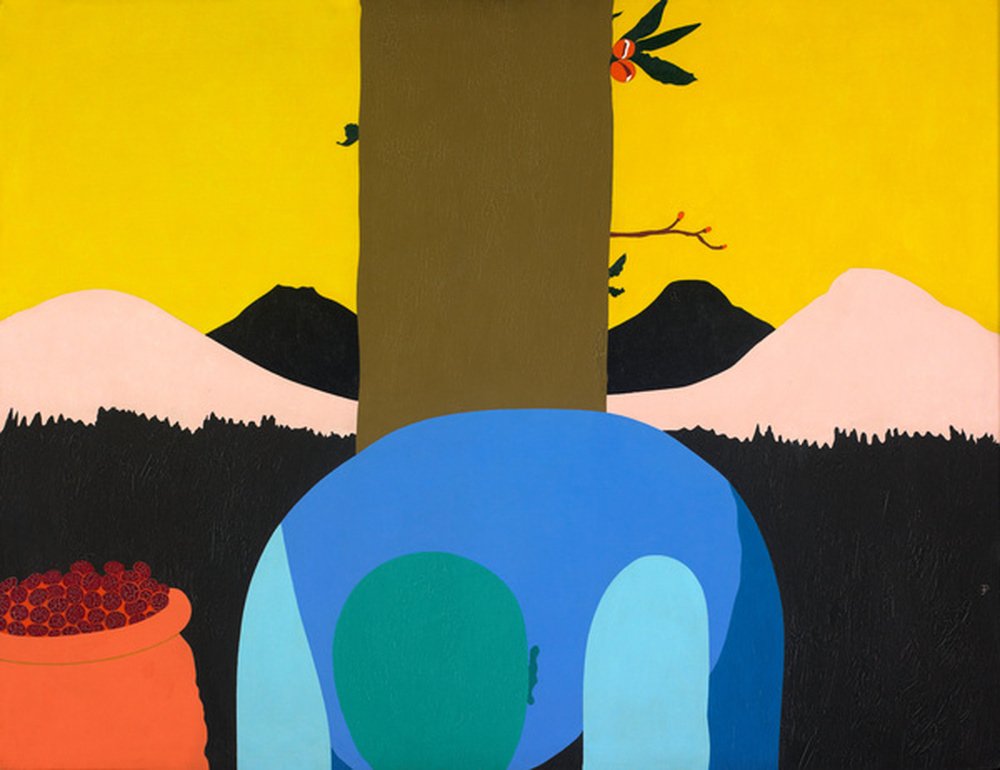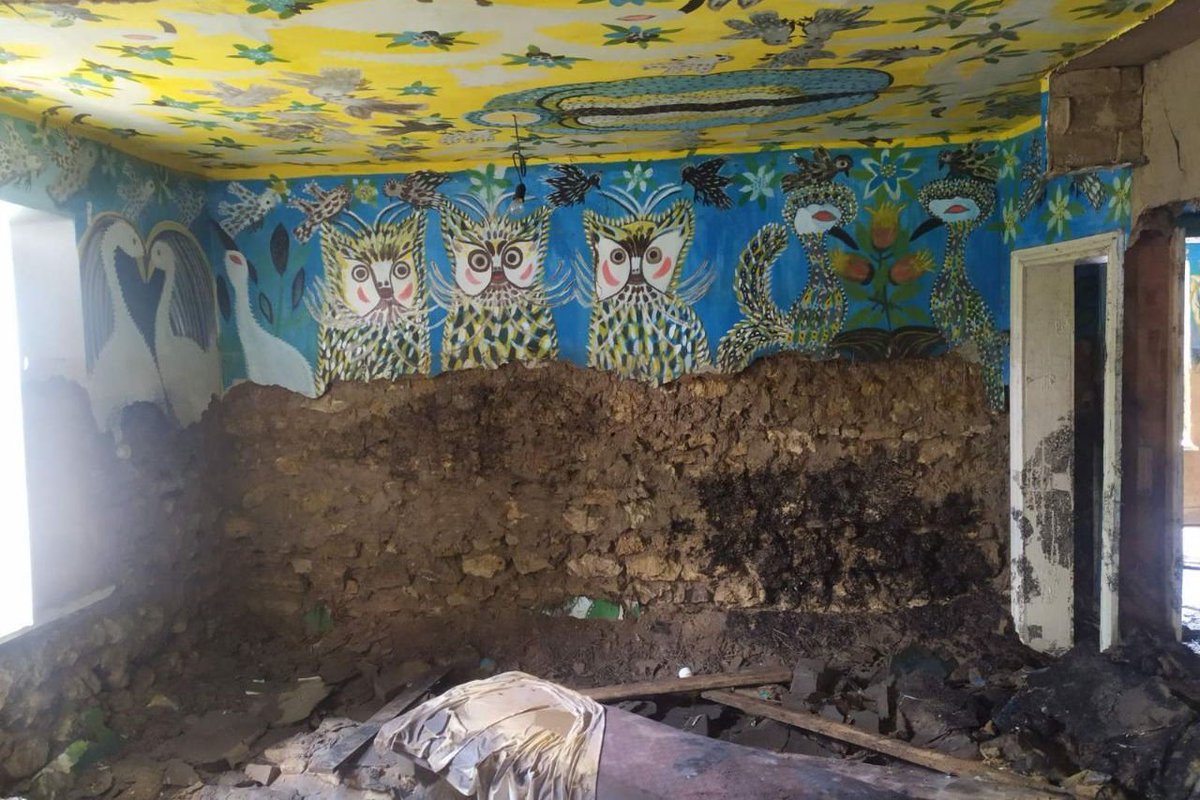How to get URL link on X (Twitter) App

 Zhuk was born in Nova Kakhovka, Kherson oblast (now occupied). His father was a painter, and since childhood began to help his father. At the age of 13, Mykhailo was already studying at the Kyiv Drawing School of Mykola Murashko.
Zhuk was born in Nova Kakhovka, Kherson oblast (now occupied). His father was a painter, and since childhood began to help his father. At the age of 13, Mykhailo was already studying at the Kyiv Drawing School of Mykola Murashko. 



 The future artist was born in Chuguiv, in the Kharkiv region, into a Cossack family. His father traded horses, and his mother organised a small school for adults and children. Ilya Rypin's cousin first brought watercolour paints.
The future artist was born in Chuguiv, in the Kharkiv region, into a Cossack family. His father traded horses, and his mother organised a small school for adults and children. Ilya Rypin's cousin first brought watercolour paints. 


 Lyubov Panchenko has a typical story for Ukrainian female artist born in village: her parents were against her drawing, but they allowed her to study something more practical. So Lyuba took up embroidery. Then the soviet system censored. For a long time, the artist was forgotten.
Lyubov Panchenko has a typical story for Ukrainian female artist born in village: her parents were against her drawing, but they allowed her to study something more practical. So Lyuba took up embroidery. Then the soviet system censored. For a long time, the artist was forgotten. 


 He spent his childhood in the Donetsk region. In 1947, he became a student of the Kyiv Art Institute. At the institute, he met his future wife and co-author of the mosaics – the outstanding artist and leader of the Sixties circle, Alla Horska.
He spent his childhood in the Donetsk region. In 1947, he became a student of the Kyiv Art Institute. At the institute, he met his future wife and co-author of the mosaics – the outstanding artist and leader of the Sixties circle, Alla Horska. 



 Olena was born in the city of Brezhany, in the Ternopil region. The girl loved to draw from an early age, and her father did everything he could to encourage her daughter's passion. Her first art education was at Lviv Art School.
Olena was born in the city of Brezhany, in the Ternopil region. The girl loved to draw from an early age, and her father did everything he could to encourage her daughter's passion. Her first art education was at Lviv Art School. 




 Margit Reich was born in Kolomyia to a Jewish family. Since childhood, Margit was encouraged to study, so at 18, the girl entered the private Free Academy of Arts in Lviv, later studying art in Krakow and Vienna. She often visited Paris.
Margit Reich was born in Kolomyia to a Jewish family. Since childhood, Margit was encouraged to study, so at 18, the girl entered the private Free Academy of Arts in Lviv, later studying art in Krakow and Vienna. She often visited Paris. 



 Archypenko's father was an engineer-inventor, and his grandfather was an icon painter. Oleksandr combined these two professions in himself - and became an inventor in art. Archypenko was not lucky with his studies: he was expelled as a student for participating in strikes in Kyiv
Archypenko's father was an engineer-inventor, and his grandfather was an icon painter. Oleksandr combined these two professions in himself - and became an inventor in art. Archypenko was not lucky with his studies: he was expelled as a student for participating in strikes in Kyiv 



 Art historians from these museums never read Exter's biography and didn't know that she lived in russia only for three years. Yes, she made some theatre designs even before that, but if she's not 🇺🇦 then she is more French (at least she lived there from 1924 to 1949)
Art historians from these museums never read Exter's biography and didn't know that she lived in russia only for three years. Yes, she made some theatre designs even before that, but if she's not 🇺🇦 then she is more French (at least she lived there from 1924 to 1949) 


 She was born in Lviv; her father was Belarusian, and her mother was Ukrainian. She spent her childhood in the small village of Kutkiv. Sofia took professional drawing lessons from graphic artist Stefania Gebus in high school.
She was born in Lviv; her father was Belarusian, and her mother was Ukrainian. She spent her childhood in the small village of Kutkiv. Sofia took professional drawing lessons from graphic artist Stefania Gebus in high school. 

 Doctor, scientist, cook, construction worker, widow of the liquidator - these "roles" are almost invisible in most books, projects, and even the art I research.
Doctor, scientist, cook, construction worker, widow of the liquidator - these "roles" are almost invisible in most books, projects, and even the art I research.

 These are classic artworks by Vasyl Tropinin, which we study in our schools. He was a serf who lived in Podillia. He married a Ukrainian peasant woman and became a free man at the age of 47. He probably painted his wife.
These are classic artworks by Vasyl Tropinin, which we study in our schools. He was a serf who lived in Podillia. He married a Ukrainian peasant woman and became a free man at the age of 47. He probably painted his wife. 





 He was born into an aristocratic family in the village of Mykolaivka, which before 1918 was called Hanske. Mykolaivka is close to Odesa, so his artistic and personal life was connected to Odesa. This is his house in Mykolaivka.
He was born into an aristocratic family in the village of Mykolaivka, which before 1918 was called Hanske. Mykolaivka is close to Odesa, so his artistic and personal life was connected to Odesa. This is his house in Mykolaivka. 

 Cossack Mamay is one of the most common characters in Ukrainian folk paintings from the late 17th century to the present time. Usually with a kobza – a lute-like musical instrument; a horse, which represented both freedom; and an oak with his weapons hanging on.
Cossack Mamay is one of the most common characters in Ukrainian folk paintings from the late 17th century to the present time. Usually with a kobza – a lute-like musical instrument; a horse, which represented both freedom; and an oak with his weapons hanging on. 




 Since 1936 Emanuel studied architecture in Lviv. We don't know much about his early years. In 1939 (before the soviet invasion) he had his first group exhibition. Emanuel was friends with another famous artist from Lviv – polish painter Marek Vlodarsky (Henryk Shtrenk)
Since 1936 Emanuel studied architecture in Lviv. We don't know much about his early years. In 1939 (before the soviet invasion) he had his first group exhibition. Emanuel was friends with another famous artist from Lviv – polish painter Marek Vlodarsky (Henryk Shtrenk) 





 She was born in Kharkiv in the family of writer Perets Markish and translator Zinaida Joffe. Her father wrote in Yiddish, for which he was arrested in 1949 as a Jewish "nationalist" and shot in 1952. Her stepfather was also shot, but ironically, as a 🇺🇦 "nationalist".
She was born in Kharkiv in the family of writer Perets Markish and translator Zinaida Joffe. Her father wrote in Yiddish, for which he was arrested in 1949 as a Jewish "nationalist" and shot in 1952. Her stepfather was also shot, but ironically, as a 🇺🇦 "nationalist". 


 Oleksandr Sukholit, Adam and Eve
Oleksandr Sukholit, Adam and Eve 

 She was born to the family of Myron Surmach (who immigrated in 1910), owner of Surma Book & Music Company on East 7th Street. Surma was the oldest Ukrainian store in the U.S until its closing in 2016 and this is the place where Andy Warhol bought a vyshyvanka for Jim Morrison.
She was born to the family of Myron Surmach (who immigrated in 1910), owner of Surma Book & Music Company on East 7th Street. Surma was the oldest Ukrainian store in the U.S until its closing in 2016 and this is the place where Andy Warhol bought a vyshyvanka for Jim Morrison. 


 Rituals around the water were key in the folk tradition: dropping wreaths on the water as a fortune-telling, bathing or simply going to the rivers, rocking on the morning dew to be healthy.
Rituals around the water were key in the folk tradition: dropping wreaths on the water as a fortune-telling, bathing or simply going to the rivers, rocking on the morning dew to be healthy. 



 At first, it was a modest decoration of her property: she painted a white dove on the gate. A few years later, however, she expanded her work by painting her house, summer kitchen, fences, garage, and the graves of her relatives in the cemetery.
At first, it was a modest decoration of her property: she painted a white dove on the gate. A few years later, however, she expanded her work by painting her house, summer kitchen, fences, garage, and the graves of her relatives in the cemetery. 





 Many Ukrainian embroiderers have remained anonymous in Ukrainian art history. Not much is known about the craftswomen from the village of Veselynivka (formerly Skoptsi), yet they found themselves in the spotlight at the beginning of the turbulent twentieth century.
Many Ukrainian embroiderers have remained anonymous in Ukrainian art history. Not much is known about the craftswomen from the village of Veselynivka (formerly Skoptsi), yet they found themselves in the spotlight at the beginning of the turbulent twentieth century. 

 She was born in 1924 in Odesa. Her father held a high position in the local organization of the Communist Party, but refused to participate in the organization of the artificial famine, the Holodomor, and in 1932 he left the party. Then he worked as a carpenter.
She was born in 1924 in Odesa. Her father held a high position in the local organization of the Communist Party, but refused to participate in the organization of the artificial famine, the Holodomor, and in 1932 he left the party. Then he worked as a carpenter. 
